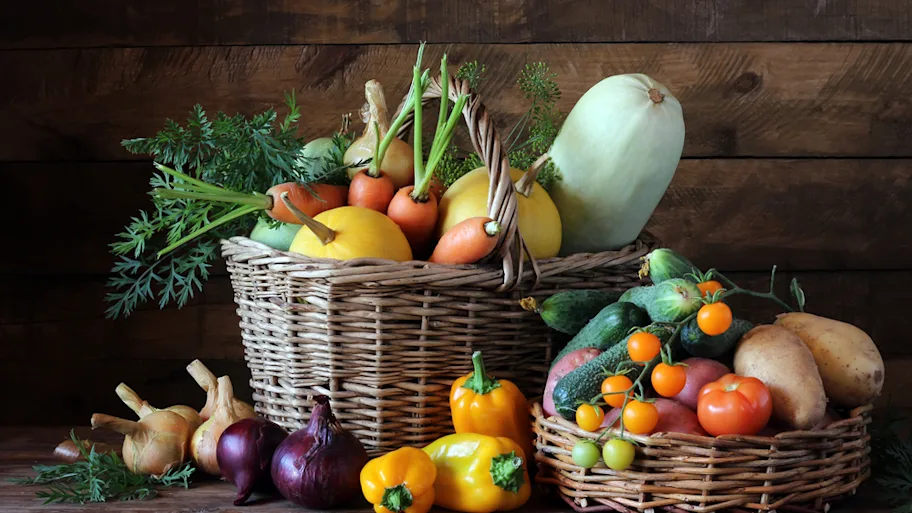
- Science News
- Environment
- Crop rotations with beans and peas offer more sustainable and nutritious food production
Crop rotations with beans and peas offer more sustainable and nutritious food production
By K.E.D Coan, science writer

Image: Lukas Gojda/Shutterstock
Adding more legumes, such as beans, peas and lentils, to European crop rotations could provide nutritional and environmental benefits, shows a recent study. The authors use a first-of-its-kind approach to show that the increased cultivation of legumes would deliver higher nutritional value at lower environmental and resource costs. This provides additional evidence for strategies to meet the European Union’s urgent environmental targets.
Growing more legumes, like beans and lentils, is potentially a more sustainable and nutritious approach to European agriculture, shows a new study in Frontiers in Sustainable Food Systems. This study presents some of the first holistic evidence that adding legumes to traditional crop rotations (typically including barley, wheat and rapeseed) offers significant environmental benefits as well as increased nutritional value for humans and livestock.
“This strategy can contribute significantly to the specific European Union Green Deal Farm to Fork objectives to reduce greenhouse gas emissions, chemical pesticide use and synthetic fertilizer use,” says first author Marcela Porto Costa, of Bangor University in the UK. “For example, in Scotland, we’ve shown that the introduction of a legume crop into the typical rotation reduced external nitrogen requirements by almost half whilst maintaining the same output of food measured in terms of potential human nutrition.”
Download original article (pdf)
A sustainable source of nitrogen
All crops need the critical nutrient nitrogen in order to grow and, for most crops, farmers must provide nitrogen via fertilizers. However, it has become increasingly clear that conventional fertilizers are not sustainable--they require significant energy to produce, they are depleting finite resources and they pollute the surrounding environments.
The European Union Green Deal Farm to Fork strategy specifically aims to address this problem, with goals to cut greenhouse emissions and chemical pesticide use by 50%, as well as reducing synthetic fertilizer use by 20% by 2030. In contrast to other crop types, legumes are among the only crops that are capable of getting all of the nitrogen they need simply from the air around them. This is thanks to a symbiotic partnership with bacteria that transforms nitrogen in the air into a form that can be used by plants.
Legume crops not only don’t require fertilizer themselves, they also enrich the soil with nitrogen, reducing the need for nitrogen fertilizers for future non-legume crops. From a nutritional perspective, legumes are also one of the most nutrient-rich crops, providing protein, fiber, folate, iron, potassium, magnesium and vitamins.
Calculating nutritional delivery
Costa and her collaborators’ new approach is more comprehensive than previous calculations of environmental footprints because it compares 10 different crop sequences using 16 different impact categories. Their assessment also represents a timeframe of 3 to 5 years and three different European climates in Italy, Romania and Scotland.
“Our innovative approach goes beyond simple food footprints by looking at the footprint of delivering a specific quantity of human, or livestock, nutrition from all crops produced within representative crop rotations,” says Dr David Styles, who coordinated the study and is based at the University of Limerick in Ireland. “This provides a clearer picture of inter-crop effects and the overall efficiency of different cropping sequences in delivering nutritious food (or livestock feed).”
So far this approach only calculates the potential nutritional delivery. The amount of nutrition ultimately delivered by different rotations will also depend on how foods are processed and sold. Further research is also needed to develop better calculations for livestock feed. The team plans to extend this approach to other types of crop rotations and additional agricultural locations and climates.
“Our results strengthen evidence on the positive role that healthy diet transitions could make to environmental sustainability,” says Styles. “Legumes provide a healthier balance of carbohydrates, protein and fiber compared with cereal crops, and could improve the nutritional profile of the food we eat.”
“These results also highlight the need for whole-system (multi-crop, farm-to-fork) thinking when designing interventions to drive sustainable food systems so that we can deliver better nutrition whilst reducing environmental impacts,” adds Costa.






